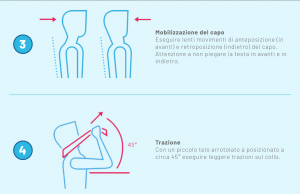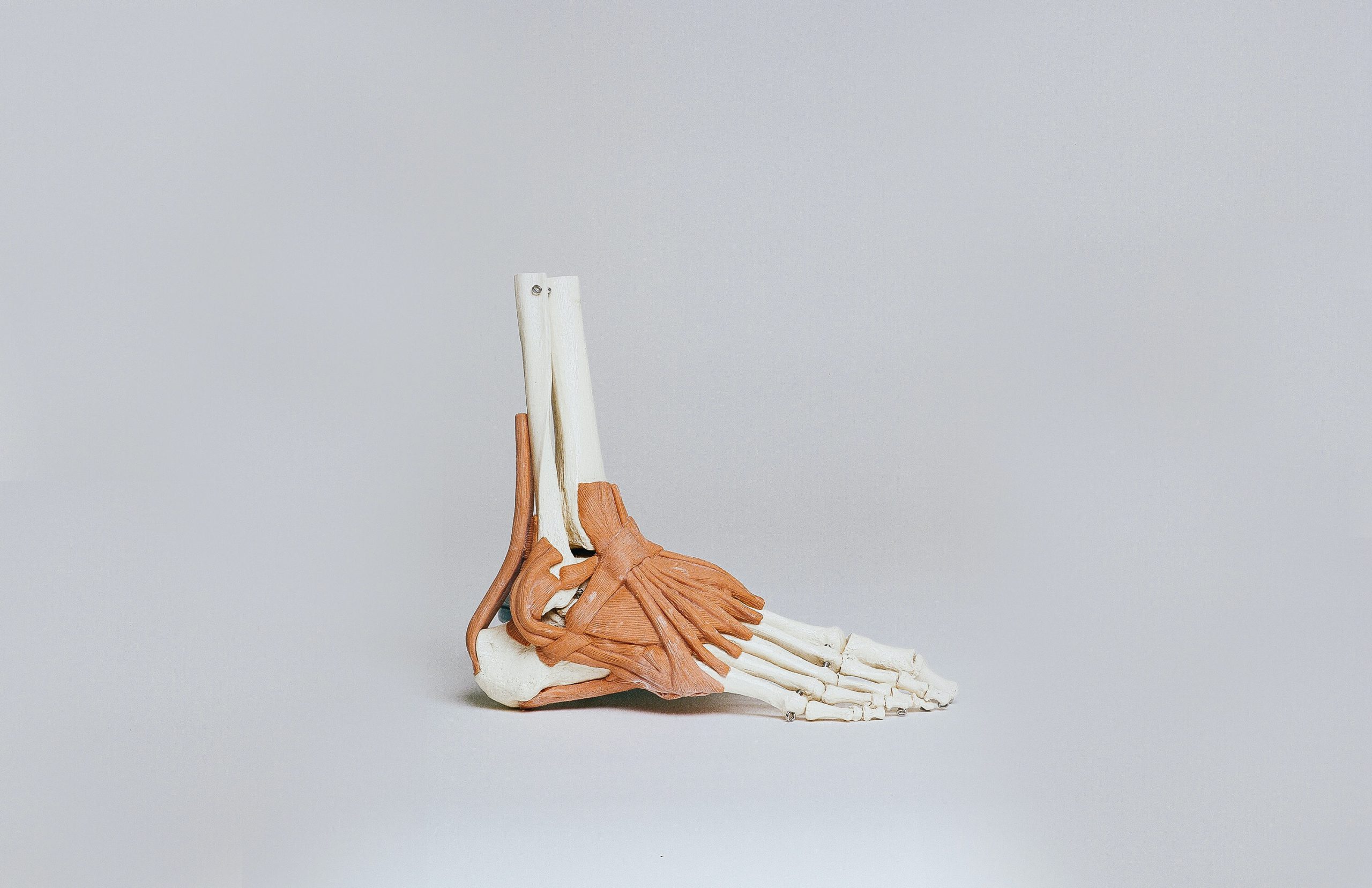Neck pain and stiff neck: remedies and causes
Torticollis literally means a twisted or distorted neck.
In physiotherapy, what we commonly know as a wryneck or stiff neck, is defined with the specific term Acute Cervical Strain and can involve a large variety of pathological patterns, the main causes of which lie in the facet joints or the intervertebral disc.
Stiffness, soreness, pains: how does torticollis (wry neck) happen?
As mentioned, the main causes of Acute Cervical Strain (the notorious “stiff neck”) may be a blocked facet joint or a problem related to the intervertebral disc, which in turn can lead to the development of muscle contractures, stiffness and consequently pain. In both cases, what really catches the eye is the posture of the person affected by a stiff neck: with the neck angled laterally, rotation and bending, unable to correct the position due to the pain.
Other causes of a stiff neck, not dealt with in this article, include spasmodic torticollis (a neurological disorder), congenital myogenic torticollis in children and Klippel-Feil’s syndrome (a paediatric disorder).
Identifying the cause of a cervical block is essential for the physiotherapist, as the treatment varies as a consequence.
Torticollis caused by locked facet joints
This mainly affects younger patients, at times children, and can occur at any segment. It usually concerns a unilateral issue (affecting one side only), with a clearly mechanical origin. The segment most affected is C2-C3 (second and third cervical vertebrae). The block often occurs after rapid, uncontrolled movements.
One possible explanation of the cause of this problem is to be found in the anatomical structure of the facet joints: Wedgeshaped meniscal-like folds protrude from the synovial membrane of the joint capsule within the joint space. Following certain movements, it is possible that these folds, during the return movement, remain trapped in the joint space causing the blockage.
This problem can occur during the day, due to a rapid uncontrolled movement, or during the night, due to holding a certain position for a prolonged period (e.g. sleeping on your stomach with the neck turned). In this case the patient may wake up in the morning with the neck blocked.
In this situation, the patient has a posture with the neck bent laterally and rotated with respect to the side of pain. In fact, in this case pain is very localised and the patient can identify the precise location by pointing with the finger. At times the pain can be intense and stabbing and the patient cannot correct the position of the head, with a feeling that it is completely blocked, with movements to the affected side impossible due to the pain caused by this movement. One remedy that can provide temporary pain relief is the application of heat to the area, for example by wrapping a scarf around the neck.
Torticollis caused by intervertebral disc
This usually affects patients aged between 30 and 50. This dysfunction affects above all the fourth to seventh segments of the cervical vertebrae (C4-C7).
One possible cause of this neck blockage is changes within the disc: In fact, maintaining positions with the head set in the forward position (working at the computer, reading, watching TV on the sofa etc.) can cause movements inside the disc. The fibrotic and degenerated intervertebral disc then struggles to adapt to this stress and becomes, through its innervation, the source of pain.
Therefore, inflammation of the neck does not start with a specific movement: It is the daily posture maintained over prolonged intervals or the position held while sleeping that can be the trigger factors. Pain can also develop gradually over several days, accompanied by a felling of stiffness.
Also, in this case the patient’s posture involves the head bent slightly, inclined laterally and turned to the opposite side to the location of the pain. Unlike patients with a locked facet joint, in this case the pain is more widespread and the patient indicates the area with the whole hand. The patient typically feels pain not only in the neck, but also around the shoulders, more deeply, and at times pain can spread through to the arm. What’s more, in this case the patient is able to correct the twisted position of the head, but with difficulty, and can move, but only slowly and can only lie down with a pillow. Heat can provide temporary relief, but it is essential to solve the problem at source.
Remedies for a stiff neck (torticollis): physiotherapy and useful exercises
Whatever the cause of Torticollis, physiotherapy performed by an expert therapist is the ideal treatment. This professional must be able to correctly assess the cause of the problem and consequently decide on the most appropriate treatment.
- Facet joint Torticollis: in these cases, treatment should be started as soon as possible, with the aim of shortening recovery times, which are usually around one week. Physiotherapy consists in manual techniques, aimed at “opening” the joint surfaces, such as mobilisation and/or manipulation. If these treatments are not sufficient, a targeted manipulation treatment is performed on the locked segment using instrumental therapy to reduce the muscle contracture (TECAR), stretching exercises, and muscle strengthening exercises (at a later stage).
- Disc-related Torticollis: the length of treatment in these cases is decidedly longer (4-8 weeks). It is very important that the physiotherapist understands what type of Torticollis is being treated: Unlike facet-related Torticollis, manipulation in this case is not advisable due to the consistency of the disc tissue, which does not respond well to quick and intense movements. Inadequate manipulation could even cause injury (tears/strains) and possibly a herniated disc, with consequent problems at the nerve root.
The primary objective of treatment is to create more space in the intervertebral foramen; this is achieved using various manual techniques in opening, such as techniques in traction or lateral flexion and rotation in the direction opposite to the site of pain. Other physical therapies can be useful, in order to vascularise and reduce muscle spasms, such as TECAR, as well as stretching and muscle strengthening exercises.
In the case of authentic torticollis, and therefore total lock, there are few exercises that can be performed alone and independently, due to the pain. In both of the above cases, heat can help to relieve symptoms, and therefore hot water bottles, hot showers and the use of scarves are all recommended.
Stretching in the initial phase is not possible, while it becomes an important factor once recovery is under way. The only useful exercise possible in the initial phases is to sit on a chair with the back straight and perform some deep breathing exercises from the diaphragm. If the neck allows – above all in the case of disc-related torticollis – breathing exercises can be combined with light cervical spine rotation movements.
When performing these movements, they must always be slow and uniform and, above all, if any pain, tingling or numbness is felt, it is essential to halt the exercise and seek medical advice.
How to prevent torticollis and tips on correct posture
In most cases torticollis cannot be prevented, as it is an inadvertent and causal event. However – and this applies to all musculo-skeletal issues – if we keep the joints free, muscles strong and flexible, and we lead a healthy lifestyle, we are likely to be less susceptible to events of this kind. In practice the most useful tips are: do sport to develop neck and back muscles, do regular stretching and exercises to mobilise the neck and back, control stress and diet and avoid sudden chills.
In general, and especially for those who have already had neck problems, it is recommended to avoid incorrect posture over prolonged periods of time, such as falling asleep on the sofa, watching TV in bed or carrying out work with the head bent downwards for long intervals (e.g. ironing). For those working long hours at the computer, it is recommended to take regular breaks and do exercises for stretching and mobilising the cervical spine. The position in front of the computer is also very important, with the screen opposite the eyes and forearms rested well on the desk surface.


Copyright images and exercises: albofisioterapisti.com









